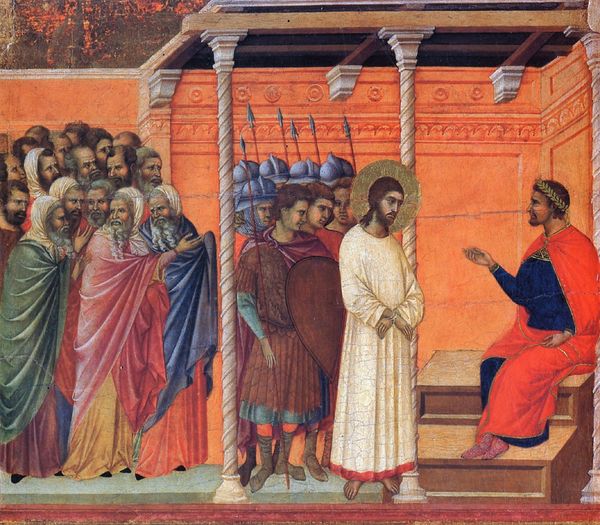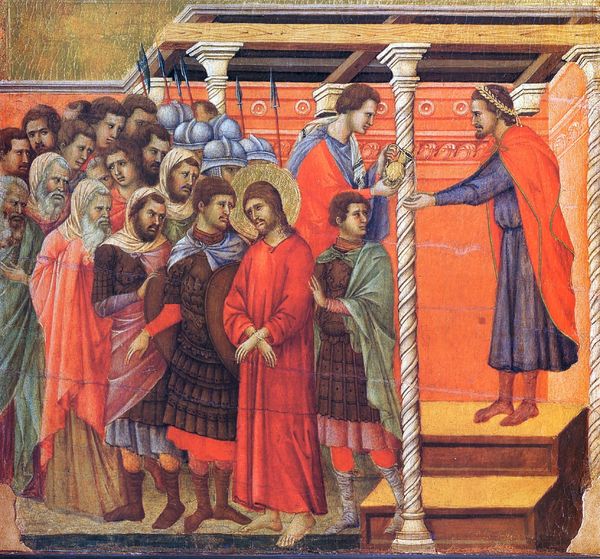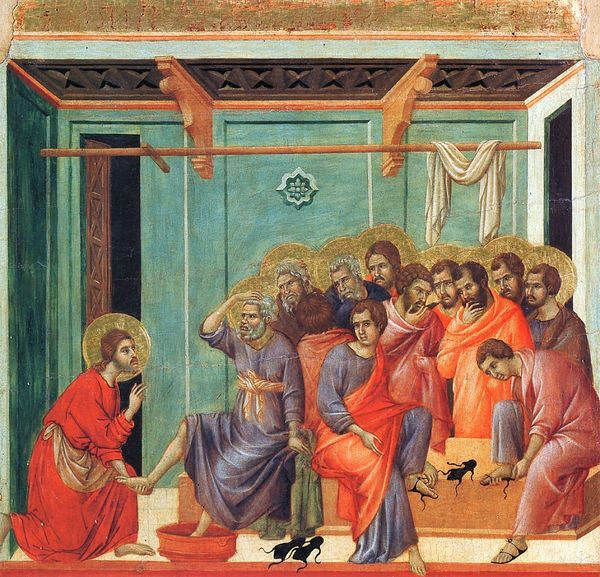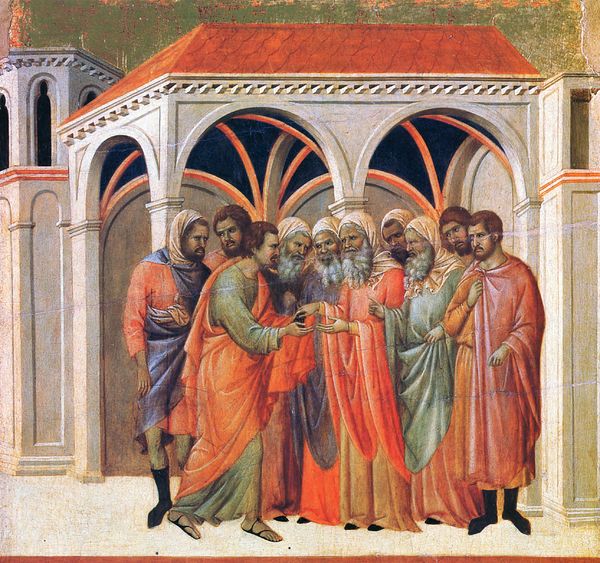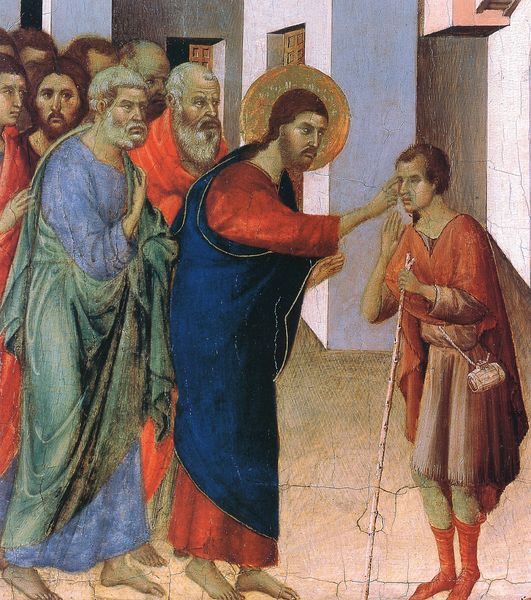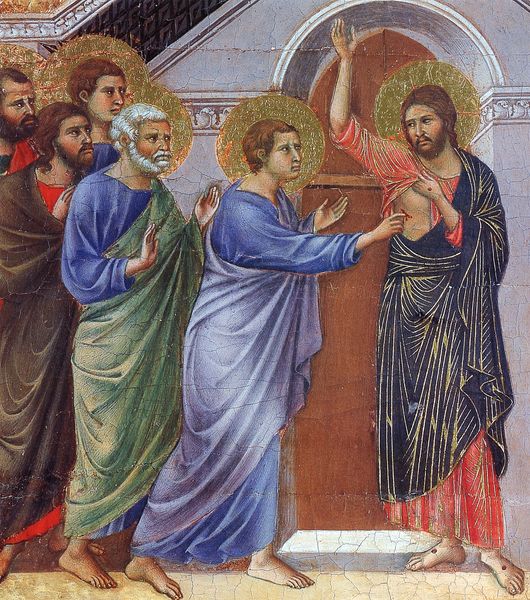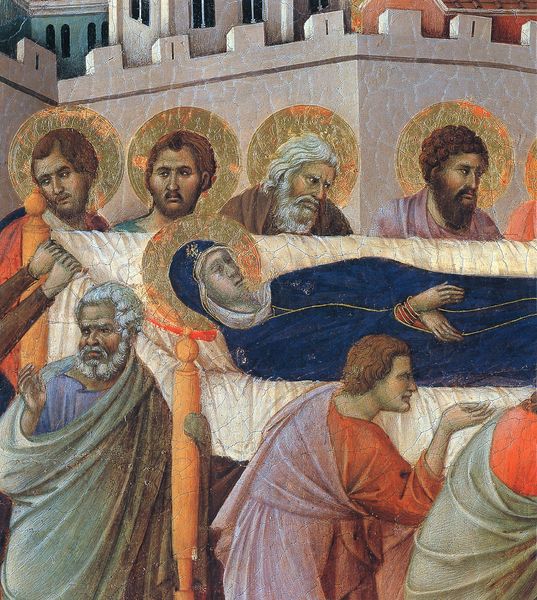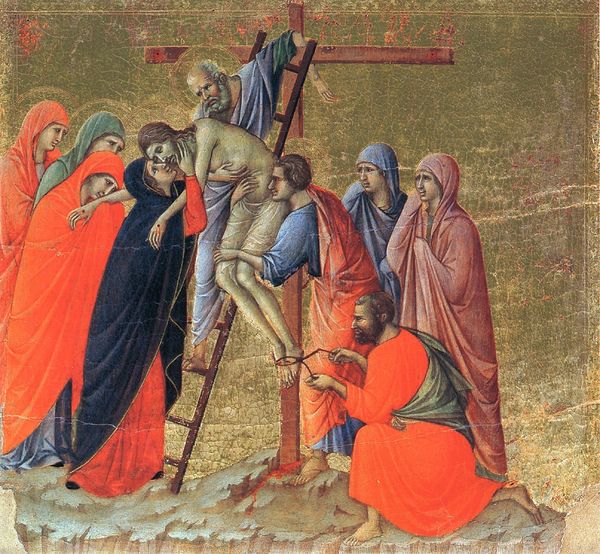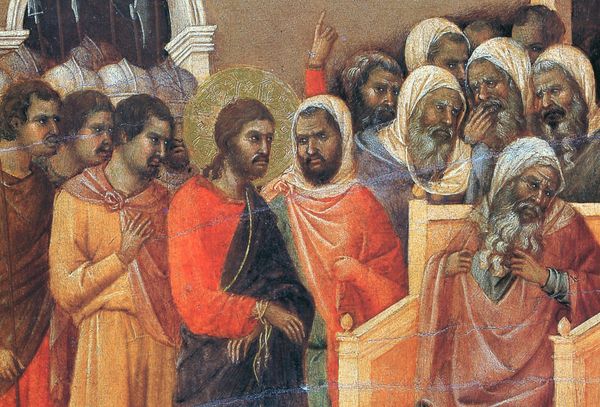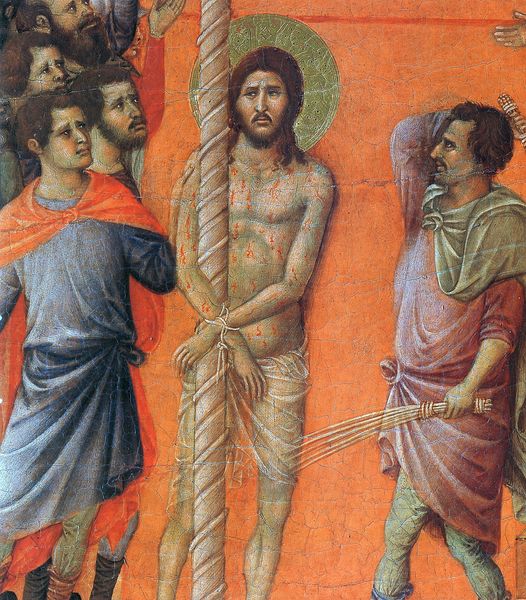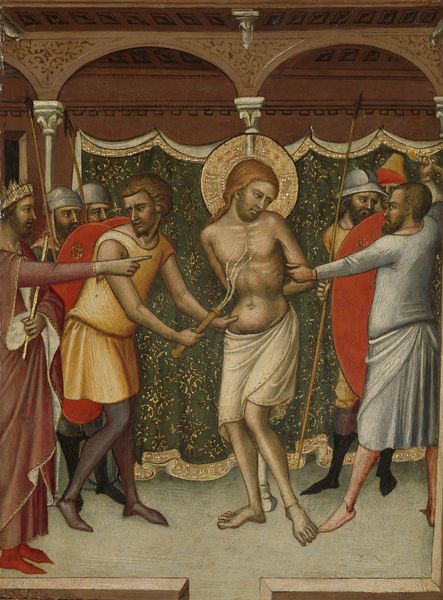
tempera, painting
#
medieval
#
narrative-art
#
tempera
#
painting
#
gothic
#
sienese-school
#
figuration
#
oil painting
#
jesus-christ
#
underpainting
#
soldier
#
christianity
#
mythology
#
history-painting
#
italian-renaissance
#
christ
Copyright: Public domain
Editor: This is Duccio’s *Flagellation of Christ*, painted around 1311, using tempera. It strikes me as incredibly graphic and, well, almost theatrical in its composition. What are your thoughts when you look at this piece? Curator: I find myself considering the material conditions of its creation. Tempera, for instance – a labor-intensive medium of ground pigments mixed with egg yolk. The artist’s workshop, the apprentices involved, the sourcing of the gold leaf. These details point to the economics and social structure embedded within the artmaking process itself. Editor: So you’re focusing more on the practical elements of how it was made rather than its religious meaning? Curator: Not exclusively. Consider how the use of tempera affects the visual impact. The fine detail, the sharp lines – these choices shape the way the story of Christ’s suffering is presented and consumed. Think about the market for religious panels like this; they served a devotional function, but were also commodities. Editor: That's interesting. The repetitive, almost assembly-line nature of religious art production is often overlooked. Does knowing the work's origin change how it is received? Curator: Absolutely! If we recognize the work involved—from the pigments to the labor invested—it challenges traditional notions of artistic genius. The "masterpiece" isn't just an individual achievement; it's the result of collaborative effort and a whole network of material and economic exchange. Editor: That's a refreshing perspective. I'll certainly think about Duccio's workshop practices the next time I view religious artwork! Curator: Exactly. Paying attention to material details forces us to think more critically about production, consumption, and the values we ascribe to art.
Comments
No comments
Be the first to comment and join the conversation on the ultimate creative platform.
